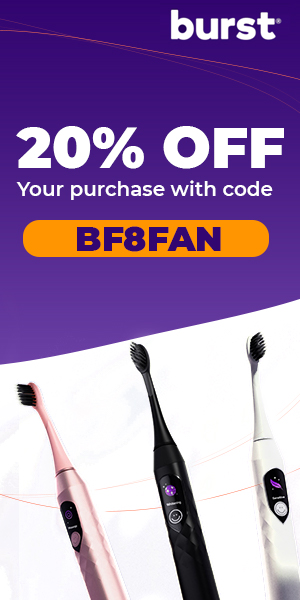What are cavities? Cavities are holes or damage in teeth caused by bacteria and acid eroding the tooth’s enamel. This process begins when food particles and sugars remain on your teeth, allowing bacteria to thrive and produce acid.
Natural Healing for Cavities
You might wonder, can you heal cavities naturally? The answer is yes, but primarily for early-stage cavities, known as demineralization. At this stage, the damage is reversible through proper care and natural methods.
Remineralization Process
Remineralization is a process where lost minerals are restored to the teeth, preventing further decay. Here’s how you can promote remineralization:
- Fluoride: Use toothpaste rich in fluoride to strengthen enamel.
- Diet: Consume foods high in calcium and phosphates.
- Hydration: Drink water rich in fluoride and minerals.
- Oral Hygiene: Maintain a consistent brushing and flossing routine.
By incorporating these practices into your daily routine, you can effectively manage early-stage cavities and improve your oral health.
| Remedy | What It Does | How to Use | Frequency |
|---|---|---|---|
| Remineralizing Toothpaste | Restores minerals to enamel and reverses early cavities. | Brush teeth with fluoride-free or hydroxyapatite toothpaste. | Twice daily |
| Oil Pulling | Removes harmful bacteria and reduces plaque buildup. | Swish 1 tbsp of coconut or sesame oil for 15-20 minutes. | Daily, preferably in the morning |
| Dietary Changes | Strengthens enamel and supports remineralization. | Avoid sugary, acidic foods; eat calcium, vitamin D, and K2-rich foods. | Daily |
| Saltwater Rinse | Balances pH levels and reduces bacteria. | Mix 1 tsp salt with warm water, rinse for 30 seconds. | Twice daily |
| Baking Soda Paste | Neutralizes acids and fights bacterial growth. | Mix baking soda with water to form a paste and brush teeth. | Once a day |
| Clove Oil | Reduces pain and fights bacteria. | Apply clove oil to a cotton ball and place on the affected tooth. | As needed for pain relief |
| Green Tea Rinse | Reduces bacterial growth and fights cavities. | Drink unsweetened green tea or rinse with it. | Once daily |
| Licorice Root | Fights bacteria and prevents tooth decay. | Chew dried licorice root or use licorice-based mouthwash. | Once daily |
8 Effective Home Remedies to Heal Cavities Naturally
1. Use Remineralizing Toothpaste
What it does: Remineralizing toothpaste restores minerals to your teeth, helping to strengthen enamel and reverse early-stage cavities. By incorporating this type of toothpaste into your routine, you can effectively combat demineralization and bolster your teeth’s defenses against decay.
How to use it:
- Brush twice daily with your chosen remineralizing toothpaste.
- Choose options that are either fluoride-free or contain hydroxyapatite.
Both fluoride-free and hydroxyapatite options are excellent for restoring tooth health. Consistency is key; stay disciplined with your oral hygiene habits.
Examples of brands: Interested in trusted brands? Look for names like RiseWell or Boka, which offer popular hydroxyapatite toothpastes. Alternatively, if you’re feeling crafty, you can try making a simple DIY remineralizing toothpaste at home using ingredients such as baking soda, coconut oil, and calcium powder.
2. Try Oil Pulling
What it does: Oil pulling helps remove harmful bacteria from the mouth and reduces plaque buildup, promoting better oral health and potentially minimizing cavity formation.

How to do it:
- Swish 1 tablespoon of coconut or sesame oil in your mouth for 15-20 minutes.
- Spit it out.
- Rinse your mouth with warm water to enhance cleansing.
How often: Incorporate oil pulling into your daily routine, ideally before breakfast, to maximize its benefits and maintain a clean oral environment.
3. Make Dietary Changes for Stronger Teeth
What to Avoid: It’s essential to cut back on food and drink that can lead to tooth decay. Sugar and processed foods are prime culprits, encouraging harmful bacteria in your mouth. Additionally, watch out for acidic drinks, such as sodas and citrus juices, which can erode enamel over time.

What to Eat: Building stronger teeth starts with choosing the right foods. Include calcium-rich foods in your diet, like dairy products and leafy greens, to help maintain healthy teeth and bones. Consuming foods high in phosphorus, such as nuts and seeds, also supports tooth strength. Don’t overlook the importance of vitamins; foods fortified with vitamins D and K2 enhance calcium absorption, promoting healthy tooth development.
To further support your efforts:
- Snack on nuts, cheese, and yogurt instead of sugary treats.
- Opt for water or milk over sodas and sports drinks.
- Include more leafy greens in your meals, like spinach and kale, for their nutrient-dense benefits.
4. Saltwater Rinse
What it does: A saltwater rinse can help balance the pH levels in your mouth, effectively reducing bacteria and soothing inflamed gums. This natural remedy is an easy and time-tested method to support your oral health and fight against cavities.

How to use it: Follow these simple steps to incorporate a saltwater rinse into your oral care routine:
- Mix 1 teaspoon of salt with a glass of warm water.
- Swish the solution around your mouth for about 30 seconds to one minute.
- Focus on areas where you feel discomfort or notice signs of gum inflammation.
- Spit it out and do not swallow.
How often: To maximize benefits, rinse with saltwater twice daily. Consider using it in the morning and right before bed to maintain a balanced oral environment and support healing.
Benefits: A regular saltwater rinse can help:
- Neutralize acids produced by bacterial plaque.
- Reduce swelling and discomfort in your gums.
- Promote healing in areas experiencing early-stage cavities.
5. Baking Soda Paste
What it does: Baking soda neutralizes acids in the mouth and helps to fight bacterial growth, which can lead to cavities. It’s a simple and effective way to boost your oral health with a pantry staple.

How to use it: Create your own baking soda paste in just a few easy steps:
- Mix a small amount of baking soda with water to form a thick paste.
- Apply the paste to your toothbrush.
- Brush gently over your teeth, focusing on areas prone to decay.
Frequency: Use this method once a day for optimal results. Baking soda is abrasive; limit usage to prevent enamel wear.
Benefits include:
- Neutralizing acids generated by bacteria.
- Reducing plaque formation and discouraging bacteria.
- Brightening teeth for a natural, polished look.
6. Clove Oil for Pain Relief

What it does: Clove oil possesses natural antibacterial and anti-inflammatory properties, making it effective for reducing cavity pain and discomfort. Its eugenol content helps in soothing and numbing the affected area, providing temporary relief.
How to use it: Using clove oil is simple and straightforward:
- Apply a small amount of clove oil onto a cotton ball.
- Place it on the affected tooth for a few minutes to allow the oil to penetrate and work its magic.
- Remember to avoid swallowing it, as its potency could cause discomfort.
Frequency: You can repeat this process daily as needed for pain management, making sure to limit usage to when the discomfort peaks.
Benefits: The use of clove oil can:
- Alleviate pain in teeth with cavity issues.
- Reduce inflammation, promoting overall oral comfort.
- Act as a temporary solution while you seek further dental advice.
7. Green Tea Rinse
What it does: Green tea is a natural powerhouse for oral health. Thanks to its antimicrobial compounds, it helps reduce bacterial growth in the mouth, which can effectively prevent cavities. Additionally, green tea contains fluoride, which aids in the maintenance of tooth structure by remineralizing enamel.

How to use it: Incorporating green tea into your oral care routine is simple and offers multiple benefits. You can enjoy a cup of unsweetened green tea daily, or boost your routine by using it as a mouth rinse. Here’s how:
- Prepare a cup of green tea and allow it to cool.
- Swish the cooled tea around your mouth for about 30 seconds to one minute.
- Spit it out and enjoy the clean, fresh feeling.
Benefits: Regular use of a green tea rinse can:
- Strengthen enamel through natural fluoride content.
- Combat bacteria, which are responsible for plaque formation.
- Provide antioxidant benefits to support overall gum health.
Frequency: Implement this green tea rinse once daily for optimal results. Remember to choose unsweetened green tea to avoid the harmful effects of sugar.
8. Licorice Root
What it does: Licorice root is a natural remedy that boasts antimicrobial properties, making it effective in fighting harmful bacteria and helping to prevent tooth decay. This ancient herb promotes oral health by keeping your mouth’s ecosystem balanced and healthy.

How to use it: Integrating licorice root into your dental care routine can be refreshing and simple. Here are a few ways to benefit from this powerful root:
- Chew on dried licorice root sticks. Doing so can naturally clean your teeth and gums while enjoying its subtle, sweet taste.
- Use a licorice-based mouthwash. This can be an easy alternative if chewing on the root isn’t your preference. Look for products specifically formulated for oral health benefits.
Frequency: For optimal results, chew the root or use the mouthwash once daily. Regular use helps maintain a clean and bacteria-free mouth, contributing to overall oral wellness.
Benefits:
- Reduces bacterial growth, curbing plaque and cavity development.
- Supports gum health with its soothing properties.
- Offers a natural, pleasant alternative to synthetic oral hygiene products.
When to Seek Professional Help
It’s crucial to recognize when you need to see a dentist for optimal oral health. Here are some key signs to watch for:
- Severe pain disrupting daily activities.
- Increased sensitivity to hot, cold, or sweet foods.
- Visible holes or discoloration in teeth.
- Swelling or persistent discomfort in gums.
While natural remedies can be helpful, they may not address serious dental issues. Professional care is essential for:
- Treating advanced cavities with fillings or crowns.
- Conducting comprehensive oral examinations to detect underlying problems.
- Removing hardened plaque and tartar through professional cleanings.
Key Takeaways
- Use remineralizing toothpaste to strengthen tooth enamel and prevent decay.
- Practice oil pulling to remove toxins and bacteria for better oral health.
- Incorporate calcium and vitamin D-rich foods to support dental health from within.
- Add baking soda paste, clove oil, green tea rinses, and licorice root to your oral care routine for additional benefits.
- Maintain consistent oral hygiene by brushing twice a day with fluoride toothpaste and flossing daily.
- Schedule regular dental checkups for professional cleanings and early issue detection.
- Limit sugary foods and drinks while increasing fruits, vegetables, and nuts for stronger teeth.
- Focus on prevention to safeguard your smile and enjoy a healthy, cavity-free mouth.





















